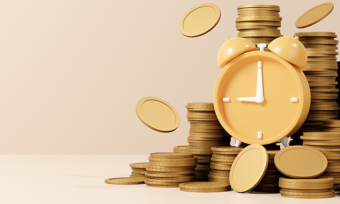KEY POINTS:
- According to the Retirement Commission’s latest figures, to the end of 2024, the average KiwiSaver balance was approx $37,000.
- The average balance for those in the 30s was $27,500; and for those in their 40s: $45,000.
- To achieve a comfortable retirement, at today’s prices, Massey University estimates a single home owner requires a KiwiSaver balance of approx $270,000.
- For a couple in the country, that balance rises to $450,000, and for a couple living in the city approx $1.1 million.
Average KiwiSaver balance by age
The latest government data reveals average KiwiSaver balances by age and gender:
| 17 & Under | 18 – 25 | 26 – 30 | 31 – 35 | 36 – 40 | 41- 45 | 46 – 50 | 51 – 55 | 56 – 60 | 61 – 65 | |
| Female | $3241 | $9433 | $18,573 | $22,171 | $27,878 | $35,991 | $44,904 | $51,879 | $56,584 | $60,303 |
| Male | $3305 | $11,507 | $22,135 | $27,664 | $35,482 | $46,210 | $58,867 | $69,959 | $77,426 | $81,753 |
| Total | $3286 | $10,028 | $19,803 | $24,075 | $30,437 | $39,641 | $50,192 | $58,940 | $65,006 | $69,104 |
Source: Retirement Commission
Calculating how much KiwiSaver you should have, by age, is tricky, as there’s no one definitive answer. But the basic rules of thumb are:
- Start saving for your retirement as early as possible.
- Save as much as possible.
- Be proactive about managing your KiwiSaver fund’s progress.
KiwiSaver gender gap
Looking at the table above, it’s clear there’s a significant difference between the average KiwiSaver balances of men and women of the same age. This is due, in part, to the following reasons:
- Gender pay gap: women often work in lower-paid sectors.
- Time out of paid work: many women take a break from working to give birth and take care of their families.
- Part-time work: a higher percentage of women work in part-time employment.
Therefore, it’s even more important for women to take an active interest in their retirement savings.
How much KiwiSaver do I need to retire?
Trying to predict how much you’ll require for a comfortable retirement is an imprecise science, one that gets more difficult the further away you are from retirement age.
But Massey University does publish rough estimates annually. Massey bases its figures on the cost of funding two different lifestyles, across rural and urban settings:
- A no-frills, basic lifestyle
- A more comfortable retirement, involving the odd holiday and occasional luxuries
| Lifestyle | Lump-sum for singles | Lump-sum for couples |
| No-frills | city | $183,000 | $120,000 |
| No-frills | country | $48,000 | $252,000 |
| Comfortable | city | $271,000 | $1,142,000 |
| Comfortable | country | $252,000 | $446,000 |
The numbers above assume you own your own home, are eligible for NZ Super payments, retire at 65 and live until 90. And, importantly, the sums are in today’s figures.
Focus on KiwiSaver earlier rather than later
Ultimately, if you’re concerned about having enough money for your retirement, you should start doing something about it now.
Due to an aging population, the retirement landscape is likely to change dramatically over the next two decades. The qualifying age for NZ Super is sure to be lifted at some point, and probably means tested, too, which will mean people will have to contribute more to their retirements.
To this end, the government is already lifting KiwiSaver contribution requirements. So to ensure that you’re not left facing a country mouse’s frugal retirement, it’s prudent to focus on your KiwiSaver funds and levels of contributions now.
Do you know what returns you’ve earned over the past year, and the fees you’ve paid? And if you are in the wrong fund for your stage of life and investment goals, you could be missing out on better returns on your investments.
Here at Canstar, we can help you find the right KiwiSaver fund for your needs. While it can be hard to predict the future, looking to the past can help you make informed choices.
Using our comparison tool, you can see funds’ past returns, alongside other information, such as annual fees and Canstar’s expert star ratings. To learn more or to start comparing, click the button below:
About the author of this page

Bruce Pitchers is Canstar NZ’s Content Manager. An experienced finance reporter, he has three decades’ experience as a journalist and has worked for major media companies in Australia, the UK and NZ, including ACP, Are Media, Bauer Media Group, Fairfax, Pacific Magazines, News Corp and TVNZ. As a freelancer, he has worked for The Australian Financial Review, the NZ Financial Markets Authority and major banks and investment companies on both sides of the Tasman.
In his role at Canstar, he has been a regular commentator in the NZ media, including on the Driven, Stuff and One Roof websites, the NZ Herald, Radio NZ, and Newstalk ZB.
Away from Canstar, Bruce creates puzzles for magazines and newspapers, including Woman’s Day and New Idea. He is also the co-author of the murder-mystery book 5 Minute Murder.




Share this article